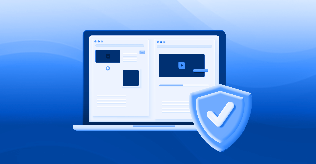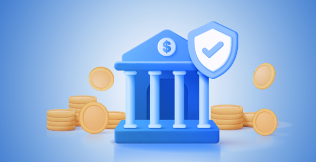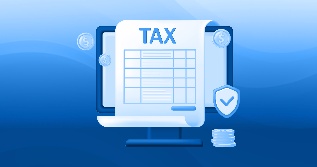Banking safety: How to make a strong password
Home > Online Safety > How To Make A Strong Password
What is a strong password? Strong passwords are crucial for online banking security. Use a mix of uppercase and lowercase letters, numbers, and symbols, aiming for at least 16 characters.
How to make a strong password: Unique passwords for each online account are essential. Avoid personal information or common substitutions in your passwords. Password generators and managers can help create and store strong passwords.
How to keep your accounts safe: Enable two-factor authentication (2FA) for added security. Update your passwords regularly and be wary of phishing attempts. Monitor your account activity for any suspicious transactions. Keep your devices and software updated and use secure networks.
In an era dominated by digital transactions, online banking has become an indispensable tool for managing personal finances. While it’s incredibly convenient, it also requires extra attention to security. Protecting your sensitive financial information from unauthorized access is crucial, and it all starts with creating strong, unique passwords.
This guide will walk you through how to make a strong password, so you can confidently manage your finances online while keeping your information safe.

What makes a password strong?
Creating a strong password isn’t just a random assortment of characters. It requires a strategic approach to maximize security. Several key factors contribute to how strong your password is:
Length
A longer password is exponentially more difficult to crack. Aim for a minimum of 16 characters.¹ Adding extra characters increases the number of possible combinations, making it much tougher for hackers to guess or break through with brute-force attacks.
Complexity
A strong password includes a diverse range of characters. This includes a mix of uppercase and lowercase letters, numbers, and symbols (e.g., !@#$%^&*). This variety adds another layer of difficulty for those attempting to compromise your account.
Uniqueness
It is crucial to avoid using the same password across multiple online platforms, especially for sensitive accounts like banking. If one account is compromised, all accounts using the same password become vulnerable. Make sure each account has its own unique password for the best protection.
Strong passwords also avoid personal information that can be easily guessed (e.g., birthdays, names of family members, pet names). Furthermore, simple substitutions (like "1" for "l" or "@" for "a") are easily deciphered and should be avoided.
Consider passphrases
A highly effective strategy is to use a passphrase – a series of unrelated words strung together. For example, "PurpleTreeSingingLoudly!" is both memorable and complex.
Password generators
Even with the best intentions, creating truly random and complex passwords can be challenging. This is where password generators can prove to be invaluable. These tools use algorithms to generate strong passwords that may better follow security best practices.
Benefits of using a password generator
- Eliminates bias: We often subconsciously introduce patterns or preferences into our passwords. Password generators eliminate this human bias, creating truly random combinations.
- Ensures complexity: These tools guarantee the inclusion of uppercase and lowercase letters, numbers, and symbols, maximizing password strength.
- Saves time and effort: Instead of struggling to come up with a secure password, a generator can instantly create one for you.
Password managers
Keeping track of multiple complex and unique passwords for different online accounts can be overwhelming. However, using password managers can help. These tools act as secure vaults for all your passwords, eliminating the need to memorize or write them down.
How password managers work
Password managers use strong encryption to securely store your login credentials for various websites and applications. All you need to remember is one master password to access the manager. It then automatically fills in your login details when you visit a site, making your online experience easier and more secure.
Benefits of using a password manager
- Enhanced security: Password managers encourage the use of strong, unique passwords for each account, minimizing the risk associated with password reuse.
- Time-saving: Automatically filling in login details saves you time and effort, especially when accessing multiple accounts regularly.
- Increased productivity: Streamlined logins allow you to focus on your tasks rather than wrestling with password management.
- Additional features: Many password managers offer extra security features like two-factor authentication, password strength analysis, and secure sharing of login details.
- Keep in mind that password managers do create a single point of failure: if a malicious actor gains access to your password manager, then they may be able to access passwords for all of your accounts. Following basic safety steps like having a strong master password, enabling multifactor or two-factor authentication, and being aware of security vulnerabilities could help keep you protected
Additional tips for banking security
While strong passwords are the cornerstone of online banking security, they are not the only line of defense. Implementing these additional measures can significantly bolster your account protection:
Two-factor authentication (2FA)
Whenever possible, enable two-factor authentication on your banking accounts. It adds an extra layer of security by requiring a second form of verification, such as a unique code sent to your phone or email, in addition to your password.²
This makes it significantly harder for unauthorized individuals to access your account, even if they have your password.
Regular password updates
Even the strongest passwords can become compromised over time. It's important to update your banking passwords regularly, ideally every 3-6 months. This limits the window of vulnerability if a password is compromised.
Beware of phishing attempts
Phishing attacks are designed to trick you into revealing your login credentials or other sensitive information. Be wary of suspicious emails, text messages, or phone calls that ask for your banking details.
Remember, your bank will never ask for your full password or account numbers via these channels.
Monitor account activity
Regularly review your bank account statements and transaction history for any suspicious activity. Report any unauthorized transactions to your bank immediately.
Secure your devices
Ensure that your computer and mobile devices are protected with strong antivirus and anti-malware software. Keep your operating systems and software updated to patch any security vulnerabilities.
Use secure networks
Avoid accessing your banking accounts on public Wi-Fi networks, as these can be vulnerable to hacking. If you must use public Wi-Fi, consider using a Virtual Private Network (VPN) to encrypt your connection.
Secure your financial future
Overall, strong passwords serve as the first line of defense against unauthorized access and financial fraud.
By understanding the principles of password strength and utilizing tools like password generators and managers, you can significantly enhance your online safety.
Have more questions about online safety and banking? Head over to the Raisin Online Safety Guides to learn more about safeguarding your financial information and navigating the digital world with confidence.
Related Content
The above article is intended to provide generalized financial information designed to educate a broad segment of the public; it does not give personalized tax, investment, legal, or other business and professional advice. Before taking any action, you should always seek the assistance of a professional who knows your particular situation for advice on taxes, your investments, the law, or any other business and professional matters that affect you and/or your business.
Sources:
- https://www.cisa.gov/secure-our-world/use-strong-passwords
- https://consumer.ftc.gov/articles/use-two-factor-authentication-protect-your-accounts


